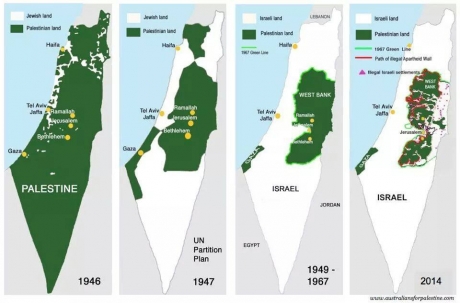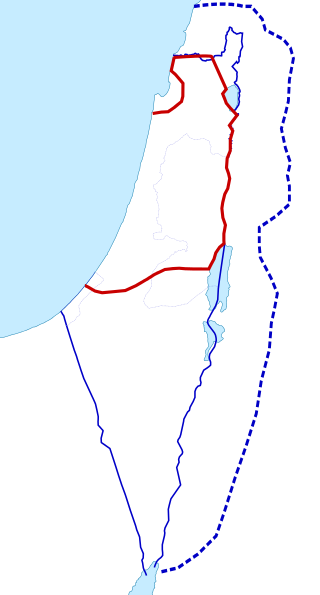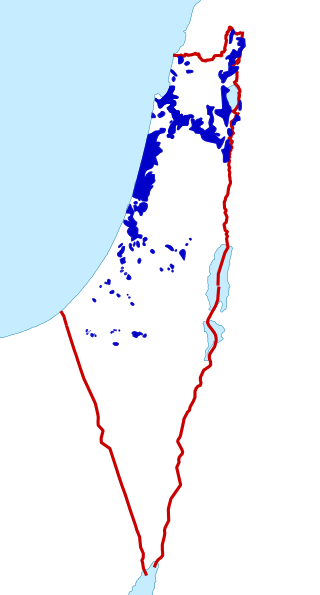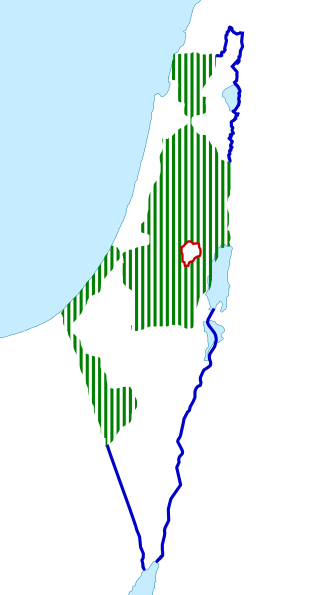7 sept 2018
|
|
At the end of Sultan Sulaiman al-Qanuni Street to the east of the Rashidieh School, the Palestinian Museum building, known as Rockefeller Building, was opened in 1938, facing the north-eastern corner of the Jerusalem wall, the Burj al-Laqlaq.
The building of the museum is a landmark of the city of Jerusalem; the tower of the hexagonal stone museum draws people’s attention. It was built on a hill that is known as the vineyard of Sheikh Mohammed al-Khalili. Founder and objectives Yousef Al-Natsheh, Director of Antiquities and Tourism at the Islamic |
Endowments in Jerusalem, said that this palace reflects the most authentic representation of the traditional Ottoman architecture in Jerusalem and Palestine since the early 17th century, before the introduction of modern architecture in Palestine.
Natsheh added to the PC reporter that the museum is also known as the Museum of the Antiquities of Palestine and is famous in the Western writings as the Rockefeller Museum, after John Rockefeller, who donated $2 million to build the museum in the late 1920s, to host what will be revealed of antiques in Palestine.
Museum collection
Natsheh encourages people to visit the museum collections and look at the building from inside, because getting to know the building will only happen if both the interior and exterior parts are examined.
In addition, the museum collections are very important and rich; it used to host some of Khirbet Qamaran’s scrolls, which later were transferred to the Israeli Museum in 1967, which are one of the most important discoveries of the 20th century.
The museum still has a large collection of wooden fillings from the Al-Aqsa Mosque, which were used to cover its roof.
There are also stone tiaras carved from the entrance to the Church of the Holy Sepulcher, as well as important antiques from Megiddo, Askalan, Jerusalem, Lachish and other sites.
British architect
Natsheh said that the building was designed by British architect Austin St. Barb Harrison (1891-1976), who studied Islamic and Byzantine architecture, and was impressed by Islamic architecture. He was appointed as the chief architect of the British Mandate Government’s General Business Department in Palestine.
Harrison lived in Jerusalem in an Arab house in Al-Thawri neighborhood. His style of designing the museum’s building and most of its buildings, including the British High Commissioner’s Palace, currently the headquarters of the United Nations, was blended with Western architectural styles, an oriental spirit and the traditional local architecture.
The museum building includes the mainstream European layout which could be seen in public buildings of several architectural units; the museum halls were designed just like churches’ halls with high windows to get natural light.
The museum was influenced by the buildings of the Old City of Jerusalem; there was a difference in the height of the museum’s many buildings, as well as by the Andalusian Islamic architecture, where an interior pool was added to the museum.
The influence of the local Jerusalem architecture on Harrison’s design, especially the use of stones, as well as walls, domes and Armenian tiles was prominent in the decoration and design, which was signed by artist David Ohansian (1884-1952).
The museum building is actually a museum in itself that shows different styles of architecture in Jerusalem to show the impact of local architecture there.
Pain
Yousef Al-Natsheh, Director of Antiquities and Tourism at the Islamic Endowments in Jerusalem, said there is a huge pain in the hearts of Palestinians.
The museum evokes two contradictory memories. It is a place that exhibits their great heritage and culture, and at the same time evokes painful memories, as a military confrontation took place there during the 1967 War.
He noted that Israel annexed the museum to the Israeli Antiquities Authority immediately after 1967, on the grounds that it was seized as a property of the Jordanian government.
According to Natsheh, exhibiting some of the museum’s holdings as part of the Museum of Israel in America was received by opposition from the largest and most famous American museums.
Natsheh added to the PC reporter that the museum is also known as the Museum of the Antiquities of Palestine and is famous in the Western writings as the Rockefeller Museum, after John Rockefeller, who donated $2 million to build the museum in the late 1920s, to host what will be revealed of antiques in Palestine.
Museum collection
Natsheh encourages people to visit the museum collections and look at the building from inside, because getting to know the building will only happen if both the interior and exterior parts are examined.
In addition, the museum collections are very important and rich; it used to host some of Khirbet Qamaran’s scrolls, which later were transferred to the Israeli Museum in 1967, which are one of the most important discoveries of the 20th century.
The museum still has a large collection of wooden fillings from the Al-Aqsa Mosque, which were used to cover its roof.
There are also stone tiaras carved from the entrance to the Church of the Holy Sepulcher, as well as important antiques from Megiddo, Askalan, Jerusalem, Lachish and other sites.
British architect
Natsheh said that the building was designed by British architect Austin St. Barb Harrison (1891-1976), who studied Islamic and Byzantine architecture, and was impressed by Islamic architecture. He was appointed as the chief architect of the British Mandate Government’s General Business Department in Palestine.
Harrison lived in Jerusalem in an Arab house in Al-Thawri neighborhood. His style of designing the museum’s building and most of its buildings, including the British High Commissioner’s Palace, currently the headquarters of the United Nations, was blended with Western architectural styles, an oriental spirit and the traditional local architecture.
The museum building includes the mainstream European layout which could be seen in public buildings of several architectural units; the museum halls were designed just like churches’ halls with high windows to get natural light.
The museum was influenced by the buildings of the Old City of Jerusalem; there was a difference in the height of the museum’s many buildings, as well as by the Andalusian Islamic architecture, where an interior pool was added to the museum.
The influence of the local Jerusalem architecture on Harrison’s design, especially the use of stones, as well as walls, domes and Armenian tiles was prominent in the decoration and design, which was signed by artist David Ohansian (1884-1952).
The museum building is actually a museum in itself that shows different styles of architecture in Jerusalem to show the impact of local architecture there.
Pain
Yousef Al-Natsheh, Director of Antiquities and Tourism at the Islamic Endowments in Jerusalem, said there is a huge pain in the hearts of Palestinians.
The museum evokes two contradictory memories. It is a place that exhibits their great heritage and culture, and at the same time evokes painful memories, as a military confrontation took place there during the 1967 War.
He noted that Israel annexed the museum to the Israeli Antiquities Authority immediately after 1967, on the grounds that it was seized as a property of the Jordanian government.
According to Natsheh, exhibiting some of the museum’s holdings as part of the Museum of Israel in America was received by opposition from the largest and most famous American museums.
29 apr 2016
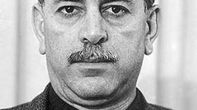
Tawfik Toubi
There was a time when 'Israeli independence' was the chief focus of the left’s leaders, Jews and Arabs alike.
It may be hard to believe nowadays, but there was a time when leftist Arab leaders in this country could rightly be called “Israeli freedom fighters.” In those days, the Arab left fought for Israeli independence and was not averse to a “Jewish state.” Accounts from that time offer much food for thought.
In August 1948, before the reunification of Maki (the Israeli Communist Party), Arab communists held a meeting in Haifa. Emile Habibi, a founder of the National Liberation League in Palestine and later a Maki MK, delivered a speech there. Kol Ha’am, the Maki journal, quoted his remarks: “The league will fight so that the Arab masses in Israel will become a democratic element that, together with the Jewish democratic forces, will fight for complete fulfillment of the United Nations resolution. Peace and independence of the Jewish and Arab state depends upon Jewish-Arab understanding.” The term “Palestinian” was not commonly used back then.
The festive unification gathering took place in October 1948 at the May Cinema in Haifa. The Davar newspaper quoted Habibi, who called for “ousting the Iraqi occupation army from Eretz Israel” and declared that the party would fight for the establishment of the Arab state “to safeguard the independence of the State of Israel.”
At the time, “Israeli independence” was the chief focus of the left’s leaders, Jews and Arabs alike. In his speech, Meir Vilner, a signatory to Israel’s Declaration of Independence, stressed his comrades’ contributions: “The great majority of our comrades are fighting in the ranks of the Israel Defense Forces. Many of our finest comrades were killed and wounded in battle as they set an example of brave and honest freedom fighters.”
He also cited the party’s contribution in recruiting international aid “for the State of Israel’s War of Independence,” noting that “just as the Arab masses wish to see the State of Israeli triumph over the invaders, the Jewish masses wish to see thwarted the imperialist plot to add on the Arab portion of Eretz Israel across the Jordan River.”
The party members’ contribution to Israel’s independence is revealed in a parliamentary question from MK Vilner in 1949 addressed to Prime Minister and Defense Minister David Ben-Gurion following the issuing of restraining orders and detention orders by the military governor against two party members – Ramzi Khuri, the Maki secretary in the Western Galilee, and Nadim Musa. The Al Hamishmar daily reported that Vilner made sure to say in his parliamentary question that these two party members “stood at the head of the Western Galilee underground against the Kawkaji gangs.”
During a January 1950 Knesset debate over the Defense Service Law, Maki members made a big impression with their speeches, according to Ma’ariv: “Tawfik Toubi stood out for his harsh words this time,” said the newspaper. Toubi had railed against the return to the country of Nimr Hawari, who headed an organization that worked against Israel. Toubi reminded the other Knesset members about Hawari’s past, about the speech he gave in Gaza in which he addressed the mufti, saying: “Under your flag, Mufti, we shall enter Tel Aviv and toss the Jews into the sea.” MK Toubi called for Hawari to be tried as a “war criminal.”
Six months later, in June 1950, Toubi came under attack from Arabs in the “administered territories.” According to a report from the Government Press Office, this occurred after the military governor issued Toubi an entry permit for the Arab village of Tira. As Toubi toured the village, he “was attacked by a group of local residents who pelted him with tomatoes and splashed ink on him. A fist fight broke out between his supporters and opponents, and sticks and knives were brandished as well.” The report goes on to say that “Mr. Toubi found refuge in the home of the military governor, who assigned five police officers to guard him and escort him until he left the village.
Like they say – those were the days.
There was a time when 'Israeli independence' was the chief focus of the left’s leaders, Jews and Arabs alike.
It may be hard to believe nowadays, but there was a time when leftist Arab leaders in this country could rightly be called “Israeli freedom fighters.” In those days, the Arab left fought for Israeli independence and was not averse to a “Jewish state.” Accounts from that time offer much food for thought.
In August 1948, before the reunification of Maki (the Israeli Communist Party), Arab communists held a meeting in Haifa. Emile Habibi, a founder of the National Liberation League in Palestine and later a Maki MK, delivered a speech there. Kol Ha’am, the Maki journal, quoted his remarks: “The league will fight so that the Arab masses in Israel will become a democratic element that, together with the Jewish democratic forces, will fight for complete fulfillment of the United Nations resolution. Peace and independence of the Jewish and Arab state depends upon Jewish-Arab understanding.” The term “Palestinian” was not commonly used back then.
The festive unification gathering took place in October 1948 at the May Cinema in Haifa. The Davar newspaper quoted Habibi, who called for “ousting the Iraqi occupation army from Eretz Israel” and declared that the party would fight for the establishment of the Arab state “to safeguard the independence of the State of Israel.”
At the time, “Israeli independence” was the chief focus of the left’s leaders, Jews and Arabs alike. In his speech, Meir Vilner, a signatory to Israel’s Declaration of Independence, stressed his comrades’ contributions: “The great majority of our comrades are fighting in the ranks of the Israel Defense Forces. Many of our finest comrades were killed and wounded in battle as they set an example of brave and honest freedom fighters.”
He also cited the party’s contribution in recruiting international aid “for the State of Israel’s War of Independence,” noting that “just as the Arab masses wish to see the State of Israeli triumph over the invaders, the Jewish masses wish to see thwarted the imperialist plot to add on the Arab portion of Eretz Israel across the Jordan River.”
The party members’ contribution to Israel’s independence is revealed in a parliamentary question from MK Vilner in 1949 addressed to Prime Minister and Defense Minister David Ben-Gurion following the issuing of restraining orders and detention orders by the military governor against two party members – Ramzi Khuri, the Maki secretary in the Western Galilee, and Nadim Musa. The Al Hamishmar daily reported that Vilner made sure to say in his parliamentary question that these two party members “stood at the head of the Western Galilee underground against the Kawkaji gangs.”
During a January 1950 Knesset debate over the Defense Service Law, Maki members made a big impression with their speeches, according to Ma’ariv: “Tawfik Toubi stood out for his harsh words this time,” said the newspaper. Toubi had railed against the return to the country of Nimr Hawari, who headed an organization that worked against Israel. Toubi reminded the other Knesset members about Hawari’s past, about the speech he gave in Gaza in which he addressed the mufti, saying: “Under your flag, Mufti, we shall enter Tel Aviv and toss the Jews into the sea.” MK Toubi called for Hawari to be tried as a “war criminal.”
Six months later, in June 1950, Toubi came under attack from Arabs in the “administered territories.” According to a report from the Government Press Office, this occurred after the military governor issued Toubi an entry permit for the Arab village of Tira. As Toubi toured the village, he “was attacked by a group of local residents who pelted him with tomatoes and splashed ink on him. A fist fight broke out between his supporters and opponents, and sticks and knives were brandished as well.” The report goes on to say that “Mr. Toubi found refuge in the home of the military governor, who assigned five police officers to guard him and escort him until he left the village.
Like they say – those were the days.
25 nov 2015
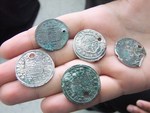
The Palestinian Ministry of Tourism and Antiquities said dozens of ancient coins were discovered in al-Shuja’iya neighborhood, in eastern Gaza City, by local municipality crews.
The ministry’s undersecretary Dr. Muhammad Khileh said dozens of ancient silver and bronze coins were found inside three ceramic stonewares.
He said the Antiquities personnel held urgent contacts with Gaza’s municipal staff and police to stop construction works in the area pending further probe into the nature of the archaeological discovery.
He said the coins will be renovated for public exhibition in Gaza’s Pasha Palace Museum.
Khileh added that a preliminary preview of the coins found out that they date back to the times of the Ottoman Empire, sometime in the early 18th century.
He said a detailed report on the different newly-discovered coins and artifacts will be released as soon as excavation works in the area are over.
The official called on the Palestinian citizens to cooperate with the concerned authorities so as to preserve the discovered artifacts which are an incontestable trace of Palestinians’ deep-rootedness in their native soil.
The ministry’s undersecretary Dr. Muhammad Khileh said dozens of ancient silver and bronze coins were found inside three ceramic stonewares.
He said the Antiquities personnel held urgent contacts with Gaza’s municipal staff and police to stop construction works in the area pending further probe into the nature of the archaeological discovery.
He said the coins will be renovated for public exhibition in Gaza’s Pasha Palace Museum.
Khileh added that a preliminary preview of the coins found out that they date back to the times of the Ottoman Empire, sometime in the early 18th century.
He said a detailed report on the different newly-discovered coins and artifacts will be released as soon as excavation works in the area are over.
The official called on the Palestinian citizens to cooperate with the concerned authorities so as to preserve the discovered artifacts which are an incontestable trace of Palestinians’ deep-rootedness in their native soil.
|
|
|
|
1916–22 Proposals: Three proposals for the post World War I administration of Palestine. The red line is the "International Administration" proposed in the 1916 Sykes–Picot Agreement, the dashed blue line is the 1919 Zionist Organization proposal at the Paris Peace Conference, and the thin blue line refers to the final borders of the 1923–48 Mandatory Palestine.
|
1947 (Actual): Mandatory Palestine, showing Jewish-owned regions in Palestine as of 1947 in blue, constituting 6% of the total land area, of which more than half was held by the JNF and PICA. The Jewish population had increased from 83,790 in 1922 to 608,000 in 1946.
|
1947 (Proposal): Proposal per the United Nations Partition Plan for Palestine (UN General Assembly Resolution 181 (II), 1947), prior to the 1948 Arab–Israeli War. The proposal included a Corpus Separatum for Jerusalem, extraterritorial crossroads between the non-contiguous areas, and Jaffa as an Arab exclave.
|
1948–67 (Actual): The Jordanian occupied West Bank and Egyptian-occupied Gaza Strip (note the dotted lines between the territories and Jordan / Egypt), after the 1948 Arab–Israeli War, showing 1949 armistice lines.
|
1993–Present: Extant region administered by the Palestinian National Authority (under Oslo 2).
|
The first reference to the "Arab people" was in the AkkadianMonolith Inscription, and referred to the Bedouin who resided in Palestine in 2970 B.C.E. This long predates the entrance of the Amorites, often presumed to be the ancestors of the Israelites, from Iraq in 2400 B.C.E. and the Hyksos pharaohs of the Second Intermediate Period (1650 - 1550 B.C.E.) who the Jewish Roman historian Flavius Josephus cited as the ancestors of the Israelites. It is more than 1700 years before the Egyptian Merneptah Stele 1213 - 1203 B.C.E which referenced Palestine.
Greek historian Herodotus (484–425 BCE) and later the philosopher Aristotle (384 BCE - 322 BCE) first identified the land referred to as Palestine meaning that the name has a Greek rather than Latin or Arabic etymological root. Herodotus Histories records in 450 B.C.E. that there were diverse peoples "the Phoenicians, together with the Syrians who dwell in Palestine furnished three hundred. These Phoenicians lived in ancient time, as they themselves report, upon the Erythraian Sea, and thence they crossed over and inhabited the region along the sea coast of Syria all the way to Egypt known as Palestine." In the treatise Meteorology c.340 BCE, Aristotle wrote, "there is a lake in Palestine" referring to the Dead Sea, the deepest hypersaline lake in the world.
The people referenced as being Palestinians, are a mix of not only Canaanites (circa 20,000 B.C.E), Arab (10,000 B.C.E), Bedouins (2900 B.C.E), Syrians (circa 2400 B.C.E.) Keftiu Minoans (circa 1700 B.C.E) Phoenicians (circa 1550 B.C.E), who in composite constitute the Palestinians, these people predated Israelites by between 10,000 and 500 years respectively.
The Palestinian nationality has existed at least since Ovid, Metamorphoses in 8CE, he affirmed,, "There fell also Mendesian Celadon; Astreus, too, whose mother was a Palestinian, and his father unknown",
Palestinians are attested to in the Serabit el-Khadem in Sinai (1800 BCE), the Canaanite inscription at Ugairit (1800 BC-1450 BCE), the Amran letters (record of correspondence between Egyptian and Palestinians) 1350 BCE". The first extra-biblical reference to land of Israel comes with the Egyptian Merneptah Stele 1213 - 1203 B.C,E, (line 27) and even then it is much disputed.
It refers to a battle at Megiddio in the J'ezreel Valley. Most scholars agree that the reference is to the people of Megiddio who were defeated by the Egyptians in their war with the Hatushan Hittites.
Standard Ptolemaic maps of Asia, always included Palestine. By contrast, Herodotus; the 'Father of History', does not mention land of Israel or Judea at all in his 'Histories', he does mention Palestine numerous times. Most tellingly, he writes that "from Phoenicia the branch I am speaking of runs along the Mediterranean coast through Palestine, Syria to Egypt, where it ends. It contains three nations only.'"
Furthermore, the land of Philisitia stretches back to 1200 BCE with evidence of Keftiu Minoan (Palestinian culture) evidenced around 1700 B.C.E,, compared to a distinct Israelite culture in Judea (934 B.C.E) and Samaria (931 B.C.E).
Greek historian Herodotus (484–425 BCE) and later the philosopher Aristotle (384 BCE - 322 BCE) first identified the land referred to as Palestine meaning that the name has a Greek rather than Latin or Arabic etymological root. Herodotus Histories records in 450 B.C.E. that there were diverse peoples "the Phoenicians, together with the Syrians who dwell in Palestine furnished three hundred. These Phoenicians lived in ancient time, as they themselves report, upon the Erythraian Sea, and thence they crossed over and inhabited the region along the sea coast of Syria all the way to Egypt known as Palestine." In the treatise Meteorology c.340 BCE, Aristotle wrote, "there is a lake in Palestine" referring to the Dead Sea, the deepest hypersaline lake in the world.
The people referenced as being Palestinians, are a mix of not only Canaanites (circa 20,000 B.C.E), Arab (10,000 B.C.E), Bedouins (2900 B.C.E), Syrians (circa 2400 B.C.E.) Keftiu Minoans (circa 1700 B.C.E) Phoenicians (circa 1550 B.C.E), who in composite constitute the Palestinians, these people predated Israelites by between 10,000 and 500 years respectively.
The Palestinian nationality has existed at least since Ovid, Metamorphoses in 8CE, he affirmed,, "There fell also Mendesian Celadon; Astreus, too, whose mother was a Palestinian, and his father unknown",
Palestinians are attested to in the Serabit el-Khadem in Sinai (1800 BCE), the Canaanite inscription at Ugairit (1800 BC-1450 BCE), the Amran letters (record of correspondence between Egyptian and Palestinians) 1350 BCE". The first extra-biblical reference to land of Israel comes with the Egyptian Merneptah Stele 1213 - 1203 B.C,E, (line 27) and even then it is much disputed.
It refers to a battle at Megiddio in the J'ezreel Valley. Most scholars agree that the reference is to the people of Megiddio who were defeated by the Egyptians in their war with the Hatushan Hittites.
Standard Ptolemaic maps of Asia, always included Palestine. By contrast, Herodotus; the 'Father of History', does not mention land of Israel or Judea at all in his 'Histories', he does mention Palestine numerous times. Most tellingly, he writes that "from Phoenicia the branch I am speaking of runs along the Mediterranean coast through Palestine, Syria to Egypt, where it ends. It contains three nations only.'"
Furthermore, the land of Philisitia stretches back to 1200 BCE with evidence of Keftiu Minoan (Palestinian culture) evidenced around 1700 B.C.E,, compared to a distinct Israelite culture in Judea (934 B.C.E) and Samaria (931 B.C.E).
